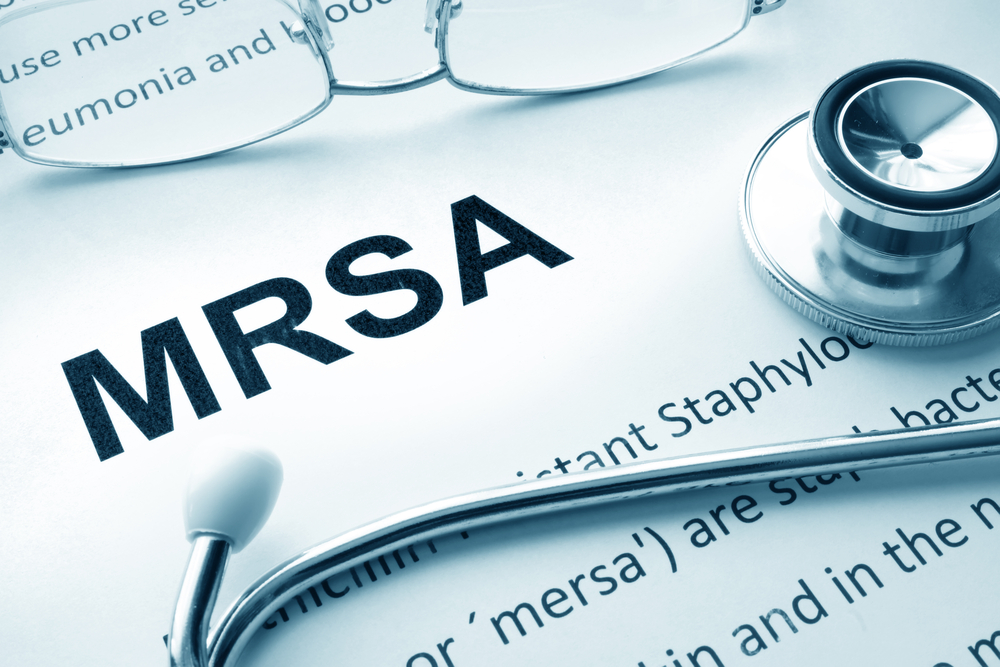Optimizing healing outcomes in acute or chronic injuries requires wound care professionals to implement the appropriate infection prevention, and control strategies that are inclusive of the use of conventional antibiotics. However, an increasing prevalence of resistant bacterial strains notably methicillin-resistant Staphylococcus aureus (MRSA), presents a unique challenge that wound care providers must tackle differently.
MRSA and Wound Care: Why Is This Worrisome?
MRSA presents a serious challenge to wound care physicians due to its resistance to conventional antibiotic therapy. Under normal circumstances, significant bacterial colonization of any wound inhibits the rate of tissue repair and the presence of difficult to treat MRSA within the wound site will further prolong the healing time.
A prolonged duration of wound infection will translate into the need for more facility-based care, an increased cost of medical care, and most importantly, a higher morbidity rate. MRSA wound colonization can result in the dissemination of a surface infection to the bloodstream as well as various body organs and tissue systems
Risk Factors for Wound Colonization With MRSA
For every individual that develops an MRSA wound infection, there are various intrinsic and extrinsic risk factors at play.
Intrinsic (Patient-related) Risk Factors
The risks are due to deficiencies in the health state of the affected individual:
- Chronic wounds and ulcerations
- Reduced mobility
- Advanced age
- The presence of chronic medical illnesses (diabetes, peripheral vascular diseases, etc)
- Concurrent dermatological conditions (dermatitis, eczema, etc)
Extrinsic (Non-patient-related) Factors
These risk factors are attributable to the chemical and physical environment to which healing wounds are exposed.
- Chronic antibiotic use
- Lengthy facility-based care
- Invasive surgeries
- Close contact with carriers (other patients or wound care staff)
- Prolonged use of tubes (catheters) which serve as reservoirs of infective organisms
Is MRSA More Prevalent with Chronic Wounds?
Patients with chronic wounds carry a significantly higher risk of developing a MRSA wound infection when compared with individuals with acute injuries. These persons possess a similar group of microorganisms on their skin surfaces that make their wounds more susceptible to prolonged bacterial colonization and infections.
Symptoms of MRSA Wound Infections
It might be a bit difficult to differentiate a MRSA wound infection from one caused by a bacterium that is susceptible to conventional treatment.
Wound care experts must maintain a high index of suspicion in the following instances:
- Wounds with significant redness around the wound edges and periwound area
- Periwound edema
- Unusual pain around the wound site
- The presence of purulent discharge from the wound site
- Slowed wound repair/persistence of ulceration
The onset of fever in addition to any of the above-mentioned physical signs is an indication for expert care as it typically implies the dissemination of an infective organism to the blood or organ systems.
Diagnosing a MRSA Wound Infection
The definitive way to determine a MRSA infection requires wound care providers to collect tissue samples for laboratory testing. Careful wound swabbing and culture can accurately detect the presence of MRSA within 48 hours. Further, more rapid diagnostic tests that detect bacterial DNA, can provide definitive results within a few hours of sampling.
MRSA: Infection Prevention and Control Strategies
As MRSA represents a tough to treat infection, the focus in wound care is prevention. While specialized antibiotics are available to MRSA to treat infected wounds, implementing simple but effective prevention measures will limit the prevalence and improve outcomes in individuals with acute to chronic injuries.
Treatment Strategies
Antibiotics
The mainstay of treating confirmed MRSA infections involves the use of superior antibiotics to overcome resistance. At present, oral or intravenous clindamycin, linezolid, and vancomycin are the major antibiotics being used to treat MRSA infected wounds.
Wound Drainage, Cleansing, and Dressing
Infected wounds filled with purulent exudate must be drained, cleaned, and properly dressed to improve wound healing while limiting bacterial proliferation. These activities should preferably be carried out by experienced wound care experts observing universal safety precautions to avoid transmission to other susceptible but non-infected individuals.
Analgesics and Antipyretics
Licensed wound care physicians should prescribe appropriate pain relief medication to make their patients as comfortable as possible while being treated for MRSA wound infections. Additionally, medications to reduce fevers associated with the onset of infection should also be prescribed where necessary.
Key Tips for MRSA Prevention
As mentioned earlier, the major goal of wound care professionals managing acute or chronic wounds should be to prevent MRSA infections from occurring in the first place.
Handwashing
Initiating proper handing washing techniques remains the most effective way of limiting bacterial colonization and preventing infection. In long-term facilities where proper handwashing is practiced, MRSA infection rates can be controlled more efficiently.
Discourage Sharing Personal Items
Clothes, linens, shaving razors, and other personal items should remain personal to prevent the spread of MRSA from contaminated materials.
Use of Proper Wound Coverings
Keeping wounds covered will limit the spread of infective microorganisms from the wound site to other persons. Wound care providers should use appropriate wound dressings to contain potentially infectious wound discharge.
Proper Sanitization of Reusable Items
Long-term care facilities must ensure proper sterilization of reusable materials like beddings and wound dressing equipment to minimize cross-contamination.



.webp)

.avif)